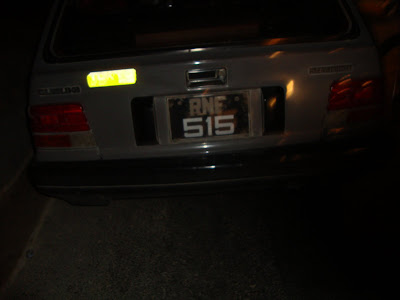Saturday, July 31, 2010
پولیس ہیڈآفس میں مددگار15کال سینٹرآئندہ ہفتے کام شروع کرے گا
Friday, April 23, 2010
White Collar Crimes (From Behind the Bars) A US Story
Sunday, March 28, 2010
Japan: DNA testing releases a prisoner after 17 years in jail

Man wrongfully convicted of 1990 murder acquitted; more than 1,500 line up for 48 seats
UTSUNOMIYA —
The Utsunomiya District Court on Friday acquitted a 63-year-old man who was sentenced to life in prison over a 1990 murder in Tochigi Prefecture and spent 17 years behind bars, while offering an apology to the defendant for its own past ruling.
The verdict formally cleared Toshikazu Sugaya, a former kindergarten bus driver convicted of killing Mami Matsuda, 4, in Ashikaga, Tochigi, based on flawed DNA testing and a false confession.
‘‘I feel sorry as a judge that we did not listen to Mr Sugaya’s truthful voice, and as a result, took away his freedom for 17 and a half years,’’ Presiding Judge Masanobu Sato said. The three judges stood up and bowed toward the defendant.
More than 1,500 people made a line outside the court for 48 tickets to attend the retrial. A woman in her 50s from Utsunomiya, Tochigi Prefecture, was among the 1,513 people who lined up. ‘‘I believe Mr Sugaya must have spent a painful 17 years, despite the principle of the benefit of the doubt.’‘
‘‘I would like to tell him, ‘You must be tired after such a long time’,’’ she said.
Sugaya told reporters after the court adjourned that the verdict ‘‘filled me with emotion. I appreciate it. I’m glad.’’ He also said, ‘‘I feel completely different today from yesterday…I feel refreshed by the verdict of complete innocence.’‘
It is the sixth time in the postwar era that a defendant with a finalized death penalty or life sentence has been acquitted in a retrial, according to the Supreme Court.
The prosecution abandoned the right to appeal, thus finalizing the ruling.
The retrial began last October after a fresh DNA analysis effectively proved Sugaya’s innocence. With the prosecution already having asked that he be acquitted, the focus was on how the court would sum up the case, in particular whether it would refer to the background behind the false allegations and if it would apologize for its past ruling.
Sato ruled that Sugaya was unable to resist the harsh interrogation and had made the false confession after he was confronted by the DNA testing result. ‘‘The confession is incredible and false,’’ the presiding judge said. He also ruled that as the DNA testing during the investigation was not conducted in a scientifically reliable manner, its result was not admissible as evidence.
During the retrial, audiotapes of a prosecutor questioning Sugaya were played in court, with his defense lawyers aiming to show how the defendant was forced to make a false confession and how he fell victim to a miscarriage of justice during the investigation and trials.
On the questioning, Sato said it was illegal as the prosecutor neglected to tell Sugaya that he could consult with defense lawyers and that he had the right to remain silent.
The prosecutors and police separately apologized to Sugaya after he was released from prison in June.
Sugaya, who at first admitted to the crime before retracting his confession, pleaded not guilty at his initial trial. The Utsunomiya District Court in 1993 sentenced him to life in prison, a decision upheld by the Tokyo High Court in 1996.
The Supreme Court also endorsed the guilty verdict in 2000, recognizing a DNA test as admissible for the first time.
After the district court turned down Sugaya’s plea for a retrial in 2008, the case took a new turn in 2009 when a fresh DNA analysis conducted at the request of his defense team indicated he was not the killer and opened the way for the retrial in June.
Friday, March 5, 2010
Tree Branches on the Road
An interesting Govt of Sindh Car crash in Karachi





Motorcyclist Jumps in to a Sewerage Hole
Recently on February 23, 2010, at 9 PM, at Sharae Faisal, Karachi, people heard some screams of a person, calling for help.
But he was nowhere to be seen. It was dark, and the sounds seemed ghostly!
We also stopped to inquire. Soon it transpired that a middle aged motorcyclist had jumped in to an open manhole left open by the Cantonment Board Faisal contractors on the side walk next to PAF residential quarters.
The motorcyclist was retrieved with some difficulty, and his motorcycle was also pulled out later, with the help of Traffic Police, Drigh Road Section.
There was another car accident at that time, and the motorcyclist was trying to by-pass the traffic jam. He went in, in to this deep hole with his bike, and suffered some injuries to his face and back bone.


Thursday, February 11, 2010
General Safety Measures
| Safety Measures For Family & Child | ||||||||||||||||||||||||||||||||||||||||||||||||||||||||||||||||||||||||||||||||||||||||||||||||||||||||||||||||||||||||
| ||||||||||||||||||||||||||||||||||||||||||||||||||||||||||||||||||||||||||||||||||||||||||||||||||||||||||||||||||||||||











